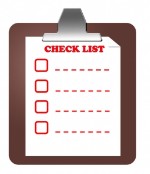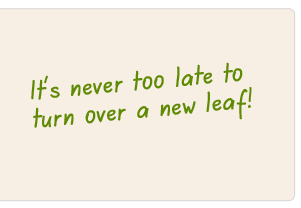Have you signed up for the Organizing Tip of the Day? 365 tips per year to inspire and motivate you in your organizing endeavours, delivered to your inbox every day at 8:00 am (EST)! CLICK HERE!
Posts Tagged ‘organizing’
Organizing Tip of the Day
November…already?
 It’s November!
It’s November!
It may say November on the calendar, but the snow outside is making it look like January.
Christmas is right around the corner.
I’ll be kind and resist the temptation to tell you how many days are left until the big day arrives.
As you’re making your holiday lists, you might like to sip on a mug of The Perfect Hot Chocolate.
Let’s get started and turn over another leaf!
GETTING READY FOR THE HOLIDAYS
The following articles are back by popular demand!
Planning for the Holidays – Part 1 and Part 2
I’m including Gift Giving Ideas too which you may find helpful.
Check Out These Cleaning Tips

Check out this article “Spring clean your way to a more valuable home.”
Check out this video Quick & Simple Life Hacks Vinegar Edition.
Spring Has (FINALLY!) Sprung!
 It’s April!
It’s April!
Spring has finally sprung! What a winter it’s been! As I’m writing this post, the street sweeping truck is going around our crescent. Unfortunately, there’s still an ice mountain on the circle, and we had a dusting of snow last night!
The calendar, however, ushered in spring a couple of weeks ago.
One sure sign of spring is our annual Maple SyrupFestival. Elmira celebrated its 50th event this past weekend! The crowds were smaller this year because of the cold weather, but people still came out to enjoy the pancakes and maple syrup!
SPRING CLEANING
Spring cleaning is generally thought of as cleaning your home from top to bottom.
I always thought spring cleaning dated back to Europe when homes were heated with coal, oil and wood. Walls and home furnishings were cleaned to remove soot and ashes. In doing some research, I discovered there are a number of origins for spring cleaning.
wiseGEEK states that homes are completely cleaned prior to Passover. “[P]eople also get rid of any leavened bread, called ‘chametz’, which are forbidden foods … Even crumbs of chametz or a few leftover specks of leftover grains from forbidden flours need to be removed from the home, and typically, Jewish families hunt for any possible chametz crumbs the night before Passover begins.”
Wikipedia tells us that “Iranians continue the practice of ‘khooneh tekouni’ which literally means ‘shaking the house’ just before Norouz [numerous spellings], the Persian new year.” Scotland’s ” ‘New Year’s cleaning’ on Hogmanay (December 31)” is “also widespread in Ireland, New Zealand, and … North America.” “In Greece, and other Orthodox nations, it is traditional to clean the house thoroughly either right before or during the first week of Great Lent, which is referred to as Clean Week. This also often corresponds with the Julian New Year, or April 1.”
Our centrally heated airtight homes need a breath of fresh spring air. So it’s time to throw open the windows–unless you’re allergic to the budding trees!
The bright spring sunshine will likely expose a few cobwebs.
So let’s get started and turn over another leaf!
You may complain that you don’t have time to spring clean your home from top to bottom. If you’ve read any of our previous newsletters, I always recommend that you start with a plan.
Create a Master List
Go through your house thinking about one room at a time. Your master list should contain all of the projects that you want to complete. Estimate how long you think each project will take. Be realistic.
The next step is to prioritize your list, and determine which room you will work on first.
Scheduling
When you schedule cleaning sessions in your planner or calendar, you’re making a commitment to do the required work.
You may not be able to complete a room all at once. If necessary, divide it into sections, and work on one section at a time. If you only have one hour, pick a project from your list that you can complete in that time period.
Keep in mind that you don’t have to do all the work yourself. If you want to clean a number of areas, schedule a family meeting. Involving the whole family in the process can teach them valuable life-long skills.
Before starting any cleaning session with children, remember to keep their attention span in mind. You might be able to clean for 3 or 4 hours at one session, but most children can’t stay focused for that length of time. Try to make it fun!
It’s also a good idea to schedule a snack break; prepare snacks ahead of time. Plan ahead–when cooking, double a recipe and freeze one batch. At the end of the day when you’re tired, you’ll have an easy meal!
Supplies
Stock up–cleaning supplies, garbage bags, recycle bin, empty boxes, rubber gloves, etc.
Getting Started
Start with the first room on your list. Focus on one room at a time. Don’t start the next room until you’ve finished.
Take a break–set a timer–to keep up your energy level. This is especially important if your children are helping.
Maintenance
Maintaining your freshly cleaned space will require some effort from everyone. Schedule a daily or weekly clean-up time, so things don’t get out of control.
Rewards
When you’re done, don’t forget to reward your children and yourself for all your hard work!
Remember, you don’t have to complete your entire list in one weekend!
Check out our “Get the Associate Scoop” section below. Martina of Naturally Clean provides some great natural cleaning solutions.
Healthy Soup For A LONG Winter!
A friend shared this recipe from Cleaning for a Reason‘s Facebook post.
I hope to try it soon!
SWEET POTATO CAULIFLOWER SOUP
Yield: 6 to 8 servings
1 large head cauliflower (at least 7″ in diameter)
olive oil for drizzling
3 medium/large peeled sweet potatoes, cut into 1″ pieces
1 sweet onion, diced
2 cloves garlic
7 cups filtered water
salt
few dashes garam masala (optional)
diced green onions for garnish (optional)
Preheat oven to 400°F, and cut cauliflower into bite-sized pieces. Sprinkle cauliflower lightly with garam masala. Place cauliflower onto ungreased cookie sheet, and lightly drizzle with olive oil. Place in oven. Roast until golden brown on the tops and tender, but not mushy–about 20-30 minutes. There’s no need to flip them. Just remove from oven, and let cool while you cook the rest of the soup.
In large stockpot, bring sweet potato, onion, garlic and water to a boil. Salt (3/4 tsp) and stir. Reduce heat and allow to remain at a constant simmer until sweet potatoes are tender. Add in cooked cauliflower, and divide soup into 2 parts.
Let soup cool and then blend one part soup in blender until very smooth. Combine with second part soup and stir. Salt to taste, and warm up over stovetop if needed. Garnish with diced green onions before serving.
It’s never too late to make healthier choices!
Fundamental Feng Shui
 I recently read an article by Jen Nicomedes, a certified Feng Shui and Destiny consultant.
I recently read an article by Jen Nicomedes, a certified Feng Shui and Destiny consultant.
“In feng shui, elementally speaking, the Water Element symbolizes spirituality and wisdom. It helps us foster a deeper sense of self. It is a vehicle that helps us navigate and seek our inner truth and purpose. And it also teaches us to go with the flow of life. While nature has its many gifts, the ocean, in particular, has taught [Jen] a few new things worth sharing. [T]hey are:
1. Life is not always how you plan it, no matter how much you force or try to control it.”
Click on the link to read Jen’s 10 Truths that will help you through any challenge.
What will you change to become more productive in 2014?
A Difficult Transition: Emptying Your Childhood Home
 It’s March!
It’s March!
Even though it’s the beginning of March, it’s still not looking like spring is just around the corner with all of the snow that’s still on the ground. But don’t let that stop you from forging ahead with your plans for this year.
Let’s get started and turn over another leaf!
EMPTYING YOUR CHILDHOOD HOME
Emptying your childhood home is one of life’s more difficult transitions. Whether your parents are moving to an apartment, a retirement residence or a nursing home–or they have passed away–here are some tips to assist you.
If possible, let your parents be in control. Put yourself in their shoes, and remember that it is their home. The process will run more smoothly if you respect their wishes.
Planning
Have a plan, and start as early as possible. Don’t expect your parents to clear out their entire house in a couple of weeks. The process takes time, as well as a great deal of energy and patience. Keep your parents’ energy level in mind.
Respect Feelings
Be empathetic. Did they grow up during the depression when possessions were scarce? Realizing that possessions are not worth very much now from a monetary point of view is an unfortunate reality. Often they have far more sentimental value.
Disposal of Possessions
Are there items that children and grandchildren find particularly meaningful to them? Schedule a family meeting. If someone doesn’t want or need items, don’t make them feel guilty. Nowadays, most people don’t want the maintenance that comes along with grandmother’s silver tea service.
Sorting through items will likely evoke many memories, and it’s common for seniors to share those stories. It’s a necessary part of the process and will help them let go. The more meaningful an item, the harder it may be. It’s often easier to let an item go if they know someone else will make good use of it. No one likes the idea of their possessions being discarded. Items that are worth money can be sold or donated.
Avoid packing items in a box and storing them in a basement. It’s not a good way to honour the memory of a loved one. In addition, it will prevent someone from dealing with the items again at a later date.
Remember–letting go of someone’s possessions does not mean you are letting go of that person. The memory of a loved one lives in your head and in your heart.
A Few Notes on Compulsive Hoarding
 It’s February already!
It’s February already!
With the winter we’ve experienced so far this year, I think it’s safe to say that the snow and cold weather won’t be gone any time soon–despite whether the groundhog did or didn’t see his shadow.
Remember to add snow shovelling and extra driving time to your schedule as needed. But don’t let the cold weather deter you from your important tasks!
So let’s get started and turn over another leaf!
COMPULSIVE HOARDING
When I tell people I’m a professional organizer, the conversation inevitably gets around to the topic of hoarding. This month I’d like to clarify some misconceptions about this topic.
With the popularity of programs such as A&E’s The Hoarders and TLC’sHoarding: Buried Alive, this once taboo subject is now seeing the light of day.The Hoarders begins each episode with the statement “more than 3 million people are compulsive hoarders.” This is an estimate only, as there is no accurate way of knowing the actual number.
Definition of Hoarding
When people tell me they know someone who is a hoarder, I caution them to be careful how they use the term “hoarder.” Many people are very quick to pass judgment or jump to conclusions about the people in these scenarios. Keep in mind that these episodes are real-life situations. It can be difficult and/or heartbreaking to watch. Understanding and compassion are needed by these people.
A&E provides the following definition: “Compulsive hoarding is a mental disorder marked by an obsessive need to acquire and keep things, even if the items are worthless, hazardous, or unsanitary.”
The Fairfax County, Virginia government provided the following information on their website:
“Hoarding is not limited to any age, race, gender or nationality. Hoarding behavior can begin early in life but is more prevalent in older adults. Hoarders can be of any educational or socio-economic level. They are unaware that their living circumstances pose a danger to themselves and to others. They are unable to change unsafe conditions on their own.”
Signs of Hoarding
Geralin Thomas, a professional organizer who has appeared on The Hoarders,advises that the signs of hoarding may include:
- “Extreme [acquisition] and storage of items in the home and in the yard
- Accumulation of combustible materials
- Blocked exits (doors/windows)
- Narrow pathways in the home
- Rat and/or insect infestations
- Rotting food and/or used food containers
- Human and/or animal waste
- Long-term neglect of home maintenance
- Non-working utilities, such as heat, running water, sewer, refrigeration”
Hoarding Situations
Unsafe living conditions can be discovered by emergency personnel such as police, fire and paramedics. Neighbours will sometimes report a person to authorities because their yard has become an eyesore.
In a number of episodes, the hoarder has been reported to authorities. It is not uncommon for them to live in fear of being evicted or having their children removed from the home.
What NOT To Do
A common misperception is that hoarders are lazy or just can’t be bothered. Geralin strongly emphasizes that a hoarder “can’t do” it, not “won’t do” it.
Clearing out the clutter will not solve the problem if the underlying root cause is not being dealt with in the proper manner. The hoarder must make the decisions about what will remain in the living space and what will be removed. It is not uncommon for people living with a hoarder to make the situation worse. Irreparable harm can be done to relationships.
The best thing you can do is encourage a suspected hoarder to seek professional help. Do not attempt to handle this type of situation by yourself, or with the help of family members, unless you are qualified.
Treatment
In 2013 the 5th edition of the Diagnostic and Statistical Manual of Mental Disorders defined compulsive hoarding as a distinct disorder within the chapter about obsessive-compulsive and related disorders.
A group of people (including socialservice workers, psychological/mental health professionals, professional organizers, etc.) may need to be assembled to determine and provide the required treatment. Successful treatment can include cognitive behavioural therapy combined with the use of medication. Often a hoarder does not comprehend that they have a problem. It is extremely important to realize that not everyone is willing to accept help or treatment.
Education
The Institute for Challenging Disorganization (ICD) in the United States is a non-profit educational organization whose mission is “to provide education, research and strategies to benefit people challenged by chronic disorganization.” ICD developed a Clutter-Hoarding Scale with Levels I-V on a continuum. This scale “is an assessment measurement tool . . . to give professional organizers and related professionals definitive parameters.” For more information, please go to their website, and click on the Resources tab.
If you or someone you love is looking for help, contact me and I can direct you to local professionals for assistance. Communities are starting to establish task forces to deal with hoarding issues.
Online Support Groups
Children of Hoarders – support for those who grew up in a hoarding environment and/or currently have a relative who hoards. Many resources, online videos, shared stories and more are provided.
Squalor Survivors – stories, photos, tools, community forums and chat, resources and information for people who know someone who hoards





Connect with us Online